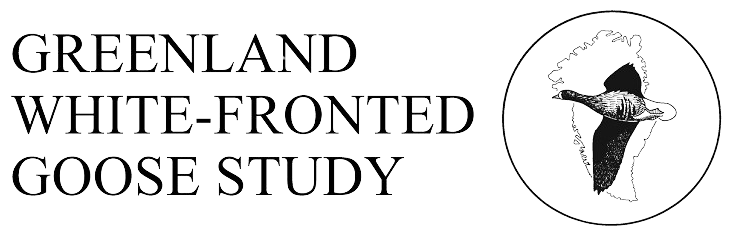History and status
Abandoned as a regular site in recent years, but formerly of regional importance (part of R&O 43). This area is known to have held White-fronted Geese since the end of the 1800s, since Harvie-Brown and Buckley (1887) reported the keeper at Strathmore bred pinioned White-fronted Geese from wounded individuals shot on the Flows about the Lodge. This area seemed to have been very important as a feeding area and roost in the 1970s, used especially in the early winter when the geese fed on their traditional bogland food items. Morning flights suggested birds commuted between the Loch Heilen area and these boglands at that time, but these no longer occur. Aerial survey and considerable ground searching suggests that with the afforestation of the peatlands, these areas are used much less than formerly and may be abandoned.
It seems highly likely now, with hindsight, that these birds were wholly or partly associated with the birds feeding around Loch of Mey/Loch Heilen. In all probability, the magnificent patterned peatland areas of this part of Caithness were the original traditional feeding area of the geese which gradually moved to use nearby agricultural land increasingly for feeding, especially in spring, when the spring bite of managed grassland offers good forage prior to spring migration. Of course, we shall never know the true story, but presumably the birds spent increasing time associated with agricultural land to the north and east of their traditional bogland areas, so by the 1970s, they were already spending more and more time (especially later in the winter) on farmland. Whether or not the afforestation of the peatlands accelerated their departure will never be known but there is no doubt that by the late 1980s, the habit of resorting to the peatlands had become a much reduced phenomenon. An aerial survey in November 1987 failed to find any Greenland White-fronted Geese anywhere in the extensive patterned peatlands that remained in the area at that time (Fox & Stroud 1990), indeed all the geese in the county at that time were associated with the stubble fields nearer the cost following a poor harvest and much spilled grain. The geese now feed almost exclusively on farmland around the two major lochs. This does not preclude some geese still using the peatlands, especially on arrival in autumn, as few observers penetrate these areas in winter. However, there is no regular commuting of large flocks of geese between these areas as there once was in the 1970s and very early 1980s, the last such flight being 36 birds observed on 21 October 1984, and the large scale use of the peatlands has undoubtedly long ceased.
Maximum winter counts:
Breeding success: There are no consistent production data from this site.
Feeding sites and habitat: The Caithness Flows contain some of the world’s best examples of oceanic patterned mire systems, the large areas of surface patterning of pools and hummocks providing classic habitat for Eriophorum angustifolium and Rhynchospora alba which are the favoured food items of the geese. It is not clear where the geese used to feed in these areas with regularity, but the extensive patterned mires in the vicinty of Loch a’Cherigal, Loch Meadie, Loch More and the area to the south and west would clearly have been highly attractive to the birds. Nevertheless, this general area of extensive patterned bogland in the peatland interior of Caithness (the Flow Country) has held Whitefronts since late last century (see Laybourne and Fox 1988).
Roosting sites: The Loch Meadie/Loch a’Cherigal complex was a roost site throughout the 1970s, since twice daily flights occurred between here and the Loch Heilen area. Geese passed north-east in the morning returning south-west in the evening. Stan Laybourne found geese roosted on Loch Meadie and following the birds he proved that this flock moved out to feed on agricultural in the vicinity of Loch Heilen. This is highly typical of many Greenland White-fronted Goose flocks that gradually fed less on boglands and more on farmland, but still retained the peatlands as overnight roost site and for supplementary feeding. However, this roost flight gradually ceased as each winter progressed, presumably the result of increasingly severe conditions and frost, but potentially also as a result of local food depletion that was the spur to feed elsewhere.
Habitat change: The western flank of Loch Meadie was afforested and further west extensive areas of patterned blanket mire have been ploughed, drained and planted up. Restoration schemes are under way in some areas, but much extensive suitable peatland feeding habitat was physically lost in the 1980s.
Site safeguards or disturbance refuge: Shielton Peatlands and the Loch More Wetlands SSSIs (the former with NCR status) are components of the Caithness and Sutherland Peatlands SPA and Ramsar Site.
SNH Natural Heritage Zones/Area: The Peatlands of Caithness and Sutherland.
Threats: Perhaps very little currently, although the massive afforestation of the area in the 1980s caused enormous change to the vegetation in the areas formerly used by the geese.
Linkages with other sites: None known.
References
Fox, A.D. & Stroud, D.A. (1990) Caithness aerial survey. Pp.15 In: Greenland White-fronted Goose Study. Greenland White-fronted Geese in Britain 1987/88-1989/90. Research Report no.7 GWGS, Aberystwyth.
Harvie-Brown & Buckley, T.E. (1887) A Vertebrate Fauna of Sutherland, Caithness and West Cromarty. David Douglas, Edinburgh.
Laybourne, S. & Fox, A.D. (1988) Greenland White-fronted Geese in Caithness. Scottish Birds 15: 30-35.
